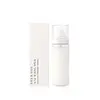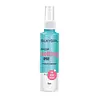What's inside
What's inside
 Key Ingredients
Key Ingredients

 Benefits
Benefits

 Concerns
Concerns

 Ingredients Side-by-side
Ingredients Side-by-side

Water
Skin ConditioningHamamelis Virginiana Water
AstringentAlcohol
AntimicrobialPropanediol
SolventVp/Va Copolymer
Glycereth-26
Humectant1,2-Hexanediol
Skin ConditioningMethylpropanediol
SolventPEG-40 Hydrogenated Castor Oil
EmulsifyingSuccinic Acid
BufferingNiacinamide
SmoothingPanthenol
Skin ConditioningCaprylhydroxamic Acid
Disodium EDTA
Parfum
MaskingStephania Tetrandra Root Extract
Skin ConditioningAloe Barbadensis Leaf Extract
EmollientZinc PCA
HumectantResveratrol
AntioxidantBisabolol
MaskingMalachite Extract
AntioxidantWater, Hamamelis Virginiana Water, Alcohol, Propanediol, Vp/Va Copolymer, Glycereth-26, 1,2-Hexanediol, Methylpropanediol, PEG-40 Hydrogenated Castor Oil, Succinic Acid, Niacinamide, Panthenol, Caprylhydroxamic Acid, Disodium EDTA, Parfum, Stephania Tetrandra Root Extract, Aloe Barbadensis Leaf Extract, Zinc PCA, Resveratrol, Bisabolol, Malachite Extract
Water
Skin ConditioningButylene Glycol
HumectantPEG-50 Hydrogenated Castor Oil
EmulsifyingPhenoxyethanol
PreservativeAloe Barbadensis Leaf Juice
Skin ConditioningCaprylyl Glycol
EmollientDisodium EDTA
Sodium Citrate
BufferingTocopheryl Acetate
AntioxidantPropylene Glycol
HumectantAmp-Acrylates/Allyl Methacrylate Copolymer
Parfum
MaskingHamamelis Virginiana Leaf Extract
Skin ConditioningCitric Acid
BufferingChamomilla Recutita Extract
Skin ConditioningPotassium Sorbate
PreservativeSodium Benzoate
MaskingHydroxyapatite
AbrasiveWater, Butylene Glycol, PEG-50 Hydrogenated Castor Oil, Phenoxyethanol, Aloe Barbadensis Leaf Juice, Caprylyl Glycol, Disodium EDTA, Sodium Citrate, Tocopheryl Acetate, Propylene Glycol, Amp-Acrylates/Allyl Methacrylate Copolymer, Parfum, Hamamelis Virginiana Leaf Extract, Citric Acid, Chamomilla Recutita Extract, Potassium Sorbate, Sodium Benzoate, Hydroxyapatite
Ingredients Explained
These ingredients are found in both products.
Ingredients higher up in an ingredient list are typically present in a larger amount.
Disodium EDTA plays a role in making products more stable by aiding other preservatives.
It is a chelating agent, meaning it neutralizes metal ions that may be found in a product.
Disodium EDTA is a salt of edetic acid and is found to be safe in cosmetic ingredients.
Learn more about Disodium EDTAParfum is a catch-all term for an ingredient or more that is used to give a scent to products.
Also called "fragrance", this ingredient can be a blend of hundreds of chemicals or plant oils. This means every product with "fragrance" or "parfum" in the ingredients list is a different mixture.
For instance, Habanolide is a proprietary trade name for a specific aroma chemical. When used as a fragrance ingredient in cosmetics, most aroma chemicals fall under the broad labeling category of “FRAGRANCE” or “PARFUM” according to EU and US regulations.
The term 'parfum' or 'fragrance' is not regulated in many countries. In many cases, it is up to the brand to define this term.
For instance, many brands choose to label themselves as "fragrance-free" because they are not using synthetic fragrances. However, their products may still contain ingredients such as essential oils that are considered a fragrance by INCI standards.
One example is Calendula flower extract. Calendula is an essential oil that still imparts a scent or 'fragrance'.
Depending on the blend, the ingredients in the mixture can cause allergies and sensitivities on the skin. Some ingredients that are known EU allergens include linalool and citronellol.
Parfum can also be used to mask or cover an unpleasant scent.
The bottom line is: not all fragrances/parfum/ingredients are created equally. If you are worried about fragrances, we recommend taking a closer look at an ingredient. And of course, we always recommend speaking with a professional.
Learn more about ParfumWater. It's the most common cosmetic ingredient of all. You'll usually see it at the top of ingredient lists, meaning that it makes up the largest part of the product.
So why is it so popular? Water most often acts as a solvent - this means that it helps dissolve other ingredients into the formulation.
You'll also recognize water as that liquid we all need to stay alive. If you see this, drink a glass of water. Stay hydrated!
Learn more about Water